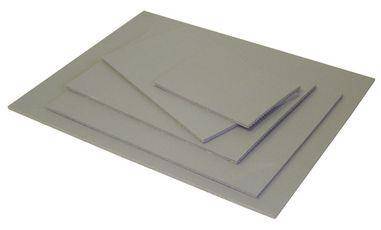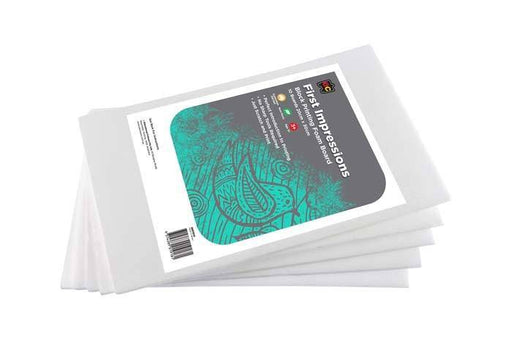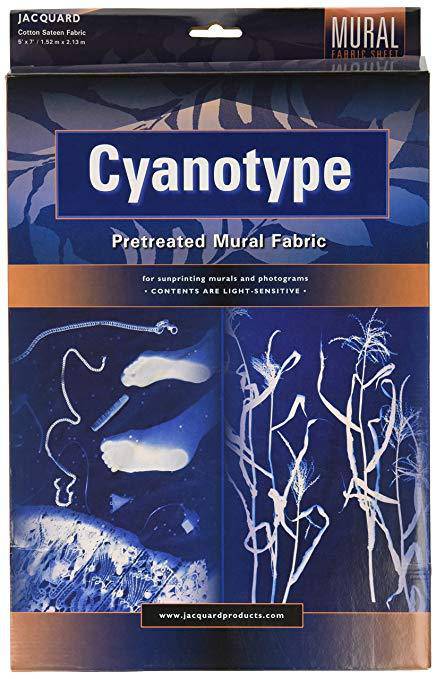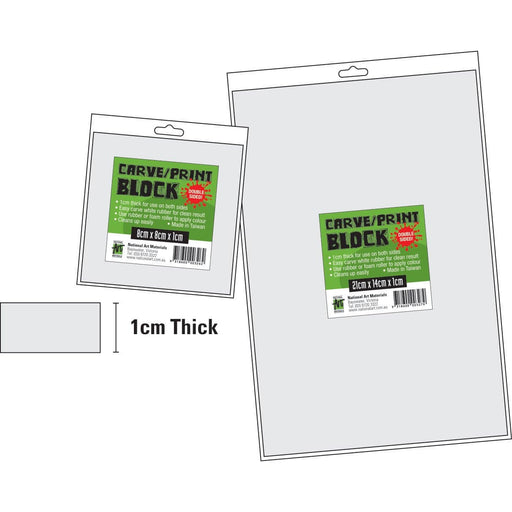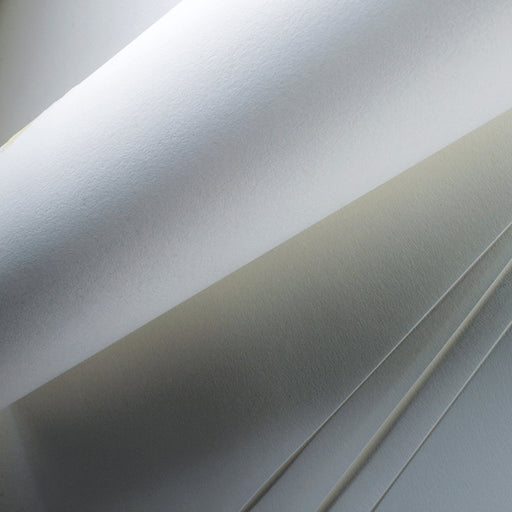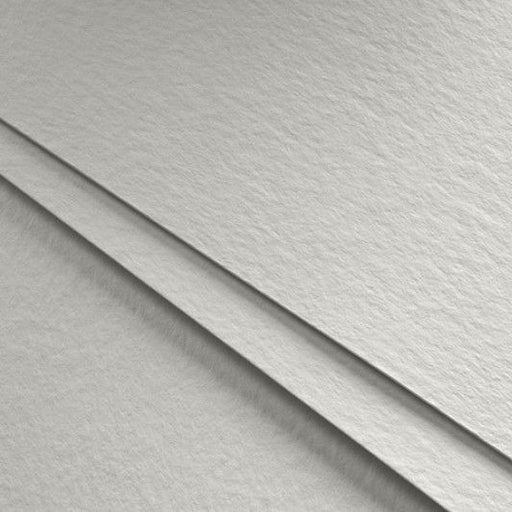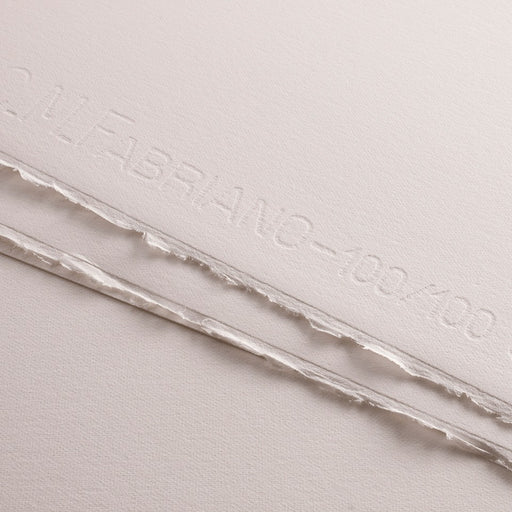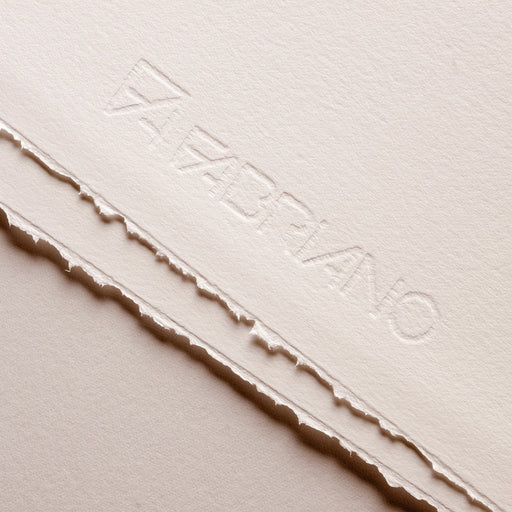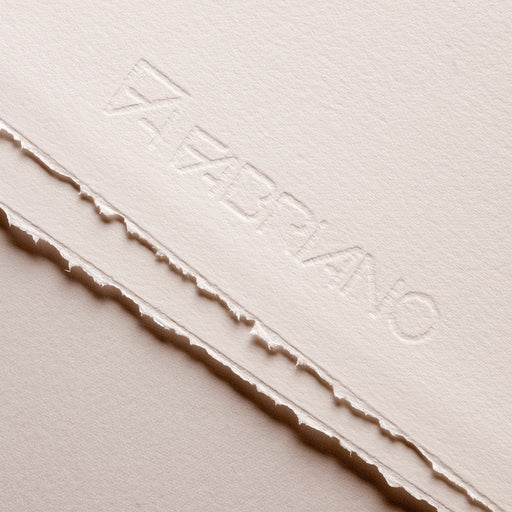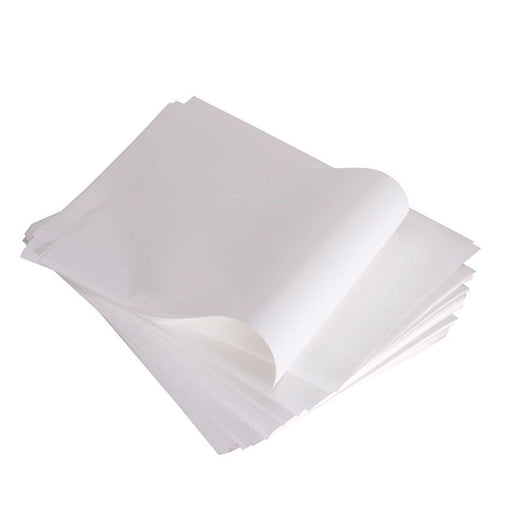Printing Paper & Boards
Art Basics Lino Relief Printing Blocks
Art Basics Lino Relief Printing Blocks are ideal for creating striking relief prints. A traditional printmaking technique, lino printing involves c...
View full detailsNAM Double Sided Soft Lino Squares
Vinyl Sheet Flexible €“ Green/Blue face double sided, soft. Available sizes 150 x 220mm 200 x 300mm 450mm x 600mm all 3 mm thick
Jacquard SolarFast Film Sheets
SolarFast Film is a high-quality inkjet film, specially coated for maximum ink density and moisture resistance. The film is also super thin (4mm po...
View full detailsEducational Colours Block Printing Foam Board Pack 10
Block Printing Foam Board. Designed for all ages as a safe, economical, easy alternative to lino. No sharp cutting tools required, simply press wit...
View full detailsJacquard Cyanotype Mural Fabric
Cyanotype is an antique photographic printing process, developed in the mid 1800's and distinctive for its rich blue color. Jacquard's high-quali...
View full detailsNAM Carve and Print Blocks Double Sided
A white 1cm thick rubber block which carves easily on both sides and accepts ink/colour for easy printing techniques. 2 sizes available: 8 x 8 x 1c...
View full detailsArches Velin BFK Rives Paper Sheets
Arches Velin BFK Rives Paper Sheets are crafted using a traditional cylinder mould process, where slow rotation deposits cotton fibres evenly acros...
View full detailsFabriano Accademia Paper Sheets
Fabriano Accademia drawing paper is made of high-quality lignin-free and 100% cellulose, acid-free, for sketches and proof. It has a natural grain ...
View full detailsArches 88 Paper Sheets | 56cm x 76cm | 300gsm | White
Arches 88 Paper is crafted using a traditional cylinder mould process, where slow rotation ensures the cotton fibres are evenly deposited for a str...
View full detailsFabriano Unica Printmaking Paper
Fabriano Unica Printmaking Paper is a versatile printmaking paper suitable for all printmaking techniques including etching, lithography, silk-scre...
View full detailsArches Velin d'Arches Paper Sheets | 56cm x 76cm | 250gsm | White
Arches Velin d’Arches Paper Sheets are crafted from 100% cotton, offering exceptional mechanical strength and a pronounced fine-grain surface that ...
View full detailsFabriano Tiepolo Printing Paper
Fabriano Tiepolo Printmaking Paper 100% cotton, designed for various printmaking techniques including engraving, lithography, xylography, linocuts ...
View full detailsFabriano Rosaspina Printing Paper Sheets 285gsm
Fabriano Rosaspina Printmaking Paper is a quality mould-made paperboard with a natural grain surface. It is 60% cotton, and suitable for various pr...
View full detailsFabriano Rosaspina Printing Paper Sheets 220gsm
Fabriano Rosaspina Printmaking Paper is a quality mould-made paperboard with a natural grain surface. It is 60% cotton, and suitable for various pr...
View full detailsJasart Lithography Paper Sheet 60gsm
Jasart Lithography Paper is 60gsm and boasts a smooth, glossy side for printing and a textured surface on the reverse, making it great for drawing,...
View full detailsWhat are printing paper boards?
Printing paper boards are unique types of paper that are used for a variety of different printing needs. Printing paper boards have enhanced thickness and strength which makes them perfect for any printing that requires extra stability. It is commonly used in bookbinding, photo albums, luxury packaging, and greeting cards which require an extra strong structure to hold the material with care and respect.
What is printing paperboard used for?
Printing paperboard comprises special types of paperboard with high strength and stiffness, favoured by printers due to its remarkable qualities. Printing paperboards are often used in the production of brochures, magazines, cardboard boxes, packaging containers, and other thin-layered printing materials.
What are the advantages of printing paper boards?
Printing paper boards are a great alternative to other printing materials due to their strength and durability. Printing paper boards are lightweight, yet strong enough to hold graphics, prints, or copies in place better than other materials. This makes them highly popular for applications like packaging, displays, and point-of-sale materials. Printing paper boards also offer better water resistance than most other papers and products, helping keep whatever is printed on them clear and crisp despite moisture or humidity. Printing paper boards are also easy to die, cut, score, or fold. Printing on these materials is also quick and affordable which increases their value as an option in many projects.
What are some tips for using printing paper boards
Printing paper boards are an economical way to share information at the office or in a classroom.
When using printing paper boards, it is important to check the back side of the board and remove any smooth hard plastic writer before attempting to print. Additionally, changing from glossy mode to a matte finish will provide better absorption of ink for the best results. By following these tips, you can ensure the quality of your printed documents.
What art supplies will I need when using printing paper boards?
- Printing paper boards are a great, inexpensive way to explore your creativity and can be enjoyed by all ages.
- When using printing paper boards, you'll need several items including paints, including markers, pencils, erasers, brushes, palettes, ink pens for details, and tape for outlining your images.
- You'll also want to make sure that you have a range of papers available so that you can practice different techniques with multiple designs or styles.
What are the differences between paper and paperboard?
Printing paper and printing paperboard both have important applications within the industry, however, they are two distinct materials. Printing paper is a traditional wood-based paper product, typically composed of natural fibers such as cotton or hemp blended with heavily refined and processed wood pulp. Printing paperboards, on the other hand, are composed primarily of recycled post-consumer fiber — including corrugated fiberboard — and provide excellent rigidity even at much thinner sizes than conventional printing papers.

